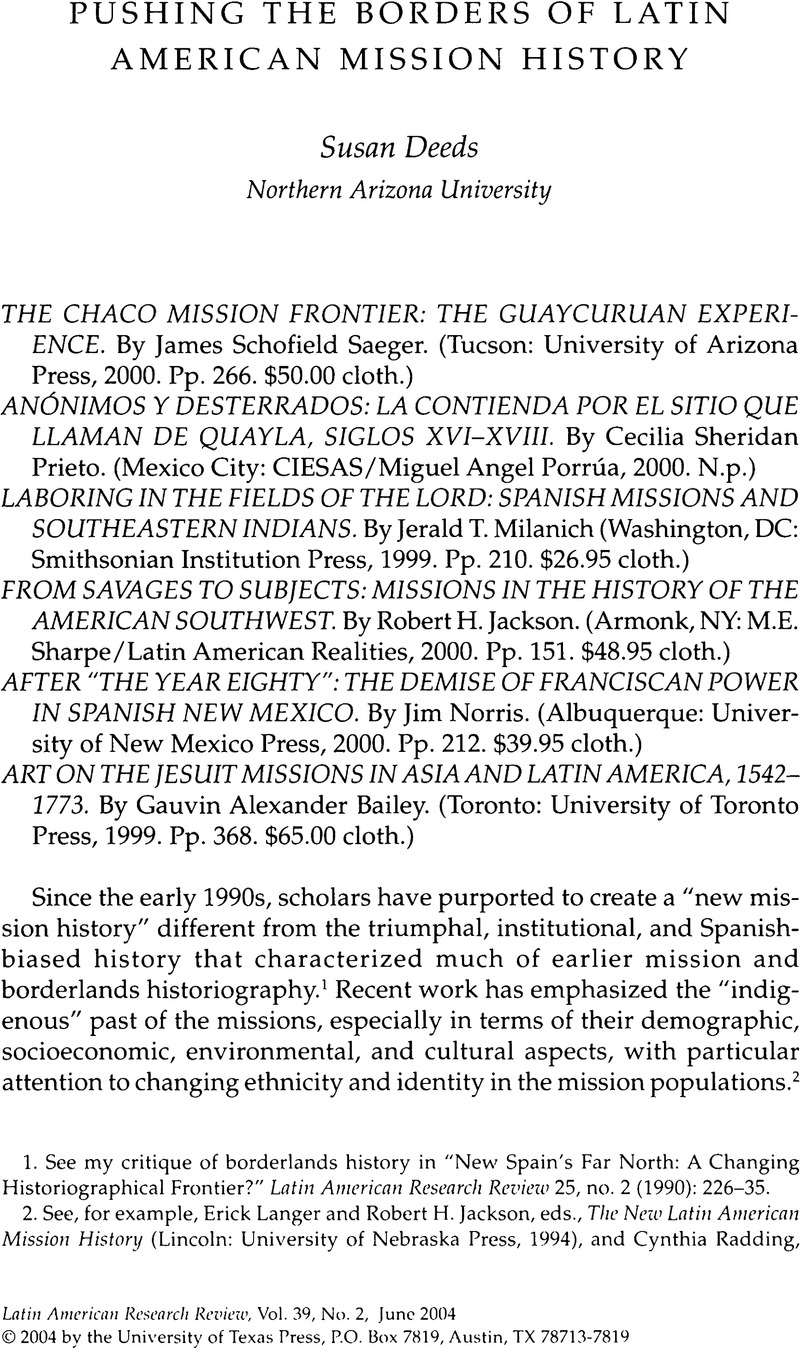Published online by Cambridge University Press: 05 October 2022

1. See my critique of borderlands history in “New Spain's Far North: A Changing Historiographical Frontier?” Latin American Research Review 25, no. 2 (1990): 226-35.
2. See, for example, Erick Langer and Robert H. Jackson, eds., The New Latin American Mission History (Lincoln: University of Nebraska Press, 1994), and Cynthia Radding, Wandering Peoples: Colonialism, Ethnic Spaces, and Ecological Frontiers in Northwestern Mexico, 1700-1850 (Durham, NC: Duke University Press, 1997).
3. In fact, Saeger directly engages the arguments advanced in David Sweet, “The Ibero-American Frontier Mission in Native American History,” in Langer and Jackson, eds., New Mission History, 1-48.
4. For this perspective, see James F. Brooks, Captives and Cousins: Slavery, Kinship, and Community in the Southwest Borderlands (Chapel Hill: University of North Carolina Press, 2002).
5. Although most of these studies focus on other areas, they are particularly useful in analyzing Jesuit relationships with indigenous peoples. Barbara Ganson's keen archival research is particularly relevant to his study, although her book-length study was published after Bailey's, The Guaraní under Spanish Rule in the Río de la Plata (Stanford, CA: Stanford University Press, 2003).
6. On this question, see the postcolonial textual analysis of José Rabasa, in Writing Violence on the Northern Frontier: The Historiography of Sixteenth-Century New Mexico and Florida and the Legacy of Conquest (Durham, NC: Duke University Press, 2000), who argues that colonial writings on these areas are part of a culture of conquest that effectively moralized terror.
7. Several historians have devised different conceptual frameworks for understanding these transformations in missions, all of them related to the concept of ethnogenesis. See Radding on social ecology in Wandering Peoples; Ganson on transculturation in The Guaraní under Spanish Rule; and Deeds on mediated opportunism in Defiance and Deference in Colonial Mexico: Indians under Spanish Rule in Nueva Vizcaya (Austin: University of Texas Press, 2003).